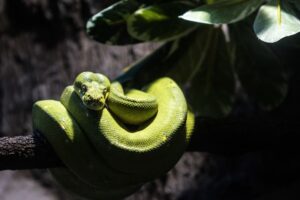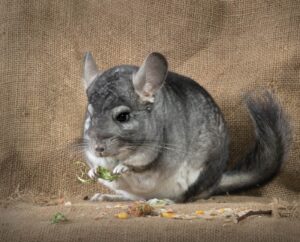Table of Contents
ToggleIntroduction
Serval (Leptailurus serval) is a striking wild cat species known for its unique appearance and remarkable hunting skills. Native to the African continent, Serval has long fascinated researchers and wildlife enthusiasts alike. One of the critical aspects of their biology is their dietary preferences, which play a crucial role in their survival and ecological function.
Understanding What Does Serval Eat is essential for several reasons. It provides valuable insights into their role in their ecosystems, their adaptations for hunting, and their nutritional needs. Additionally, their dietary habits can aid conservation efforts to protect servals and their prey species.
What Does Serval Eat: Natural Habitat And Diet
Geographic Distribution of Servals
Servals are primarily found in various regions across sub-Saharan Africa, including savannas, grasslands, and wetlands. Their distribution spans from Senegal in West Africa to Ethiopia in the northeast and South Africa in the south.
Role of Servals in Their Ecosystems
Servals are mesopredators, meaning they occupy a middle position in the food chain. As carnivores, they play a vital role in controlling prey populations, helping to maintain the balance of their ecosystems. By preying on herbivores and smaller mammals, servals help regulate plant-eating species and prevent overgrazing, which can have cascading effects on vegetation and other wildlife.
Prey Selection in the Wild
Servants exhibit a diverse diet in their natural habitats, including a wide range of prey species. They are opportunistic hunters, but their preferred prey often includes rodents, birds, and small mammals like hares and hyraxes. However, they are known to consume a variety of game, depending on what is available in their environment.
What Does Serval Eat: Serval Diet In Captivity
Keeping Servals as Exotic Pets
Servals have occasionally been kept as exotic pets due to their striking appearance. However, it’s essential to note that keeping wild cats as pets is subject to legal regulations and ethical considerations. Furthermore, providing for the dietary needs of a serval in captivity can be a complex task.
Dietary Considerations for Captive Servals
In captivity, replicating a serval’s natural diet is critical to ensure their health and well-being. One standard method is to provide them with a meal similar to the range of prey items they would eat in the wild. Good nutrition is crucial to avoid health problems caused by a lack of essential nutrients.
Replicating a Wild Diet in Captivity
Achieving a diet that closely resembles what servals eat in the wild can be challenging. It typically involves a combination of commercially available carnivore diets, whole prey items, and supplemental vitamins and minerals. Some keepers also provide servals with live prey to stimulate their natural hunting instincts.
What Does Serval Eat: Prey Items Consumed By Servals
Small Mammals
Servals are adept hunters of small mammals, constituting a significant portion of their diet. They prey on rodents like mice, rats, and squirrels, as well as larger mammals such as hares and hyraxes.
Birds and Avian Prey
Birds are another common component of a serval’s diet. Servals are skilled at catching birds in flight or pouncing on them from the ground. They target avian species, including guinea fowl, francolins, and doves.
Reptiles and Amphibians
Depending on their habitat, servals may consume reptiles and amphibians, such as frogs and lizards. These smaller prey items can supplement their diet when other options are limited.
Insects and Other Invertebrates
Insects and other invertebrates are occasionally consumed by servals, particularly when they encounter them while hunting for larger prey. This behavior showcases their opportunistic nature and adaptability in acquiring food.
Fish, If Applicable
In regions with abundant water bodies, servals may also consume fish. This dietary flexibility allows them to adapt to various environments and food sources.
What Does Serval Eat: Hunting Techniques And Adaptations
Specialized Hunting Skills of Servals
Servants are renowned for their exceptional hunting skills, keen senses, and agile movements. They often employ techniques such as stalking, pouncing, and leaping to capture their prey. Their long legs, acute hearing, and excellent night vision make them formidable nocturnal hunters.
Unique Physical Adaptations for Capturing Prey
Servals possess distinctive physical adaptations that aid in hunting. Their long legs give them a high vertical leap, enabling them to catch birds mid-air. Their large ears can rotate independently, allowing them to pinpoint the sounds of hidden prey in dense vegetation.
Nocturnal Hunting Behavior
Servals are primarily crepuscular and nocturnal, meaning they are most active during dawn and dusk. This behavior aligns with the activity patterns of their prey, which are often most active during these times. Their nocturnal hunting strategy further enhances their hunting success.
What Does Serval Eat: Serval Diet And Conservation
Impact of Habitat Loss on Serval Diet
Habitat loss and degradation due to human activities, such as agriculture and urbanization, have significant implications for servals and their prey. When natural habitats are disrupted or destroyed, it can reduce prey availability, making it challenging for servals to find adequate food.
Serval Diet as an Indicator of Ecosystem Health
Monitoring the diet of servals can provide valuable insights into the health and stability of their ecosystems. Changes in prey availability or composition can indicate broader ecological shifts, including vegetation alterations and other wildlife species’ dynamics.
Conservation Efforts to Protect Servals and Their Prey
Conservation initiatives aimed at safeguarding servals often involve habitat protection, anti-poaching measures, and community-based conservation programs. By preserving the natural environments in which servalers hunt and ensuring the survival of their prey species, these efforts contribute to the conservation of these remarkable wild cats.
Conclusion
The Serval’s diet is a testament to its adaptability and ecological significance. As opportunistic hunters, servals play a vital role in regulating prey populations and maintaining the balance of their ecosystems. Understanding what servals eat sheds light on their fascinating biology and underscores the importance of conserving their natural habitats.
Protecting these environments ensures that servals can access an ample supply of prey and continue to thrive in the wild. Continued research into the dietary habits of servals and their game is essential for effectively conserving these wild cats. By gaining a deeper understanding of What Serval Eat, their nutritional needs, and ecological roles, we can better support their survival and the health of the ecosystems they inhabit.







